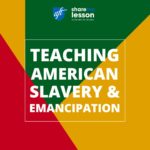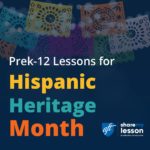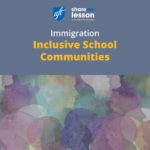Through photographs, letters, reports, interviews, and other primary documents, students explore the forced acculturation of American Indians through government-run boarding schools.
American Slavery Lesson Plans: Teaching Hard History

If you are lesson planning for the school year, or getting ready to celebrate Juneteenth — the June 19 holiday recognizing the abolition of slavery — this Share My Lesson collection has what you need to teach preK-12 students the history of American slavery. This preK-12 lesson and activity curated collection is in response to a Southern Poverty Law Center report, “Teaching Hard History: American Slavery,” that shows that schools are failing to teach American Slavery. This collection of resources features some of our partner and users’ best material to ensure schools and teachers have the support they need to teach about the history of American slavery.
Black History Month Lesson Plans on Nonviolence
The power of nonviolent actions and attitudes as a means to resist oppression and spur reforms is a recurring feature of democratic and democratizing societies. The School Violence Prevention Demonstration Program presents educators with lesson plans that explore the use of nonviolence in history, paying particular attention to the civil rights movement and African American history. Six lessons address: the 1963 Children’s March; the concept of nonviolence using primary sources and stories of participants in the civil rights movement; the power of nonviolence; the story of Rosa Parks; citizenship schools; how music can be used to achieve social and political change.
Indigenous Peoples and Native American Lesson Plans & Resources

November is National Native American Heritage Month, and now more and more schools are recognizing Indigenous Peoples Day, in lieu of Columbus Day, on the second Monday in October. Share My Lesson has curated this collection of free lessons, activities, and videos to assist educators in teaching about the ways of life of indigenous peoples from around the world in order to foster understanding of our shared sense of humanity.
Hispanic Heritage Month Activities & Resources

Each year, from September 15 to October 15, the United States observes Hispanic Heritage Month. During the month-long celebration, which begins on the anniversary of the independence of many Latin American countries, we commemorate the histories, cultures and contributions of Hispanic American citizens. Share My Lesson has lesson plans, activities, and classroom resources to help educators celebrate Hispanic Heritage Month in their schools.
Defining Classroom Citizenship
The founders understood that, in order to preserve their liberty and happiness, and that of future generations, the foundation of successful self-government was citizens who understood and applied certain virtues. They constructed the U.S. Constitution according to their study of the principles and virtues that were most necessary to sustain a free, prosperous, and orderly society. This lesson is ideal for the first day of school.
Civics in Real Life
Civics in Real Life is a simple-to-use resource that ties in to what’s going on today. On this page, updated regularly through the school year, you will find concise resources that explore a civics concept or idea connected to current events. Simply click on the resource to download the PDF and share with your students!
Immigration Lesson Plans and Resources

Share My Lesson has curated these immigration lesson plans & resources to raise awareness about the crisis on the border, and the need to foster awareness, cooperation and mutual understanding. In this collection, you will find dozens of rich, engaging resources to teach about immigration policy, history, and awareness with preK-12 students.
Brown v. Board of Education (1954) eLesson
After the Civil War, the 14th Amendment was passed to grant citizenship to former slaves and protect them from civil rights violations in their home states. Public schools were relatively rare throughout the United States, but were often segregated by race where they existed. The same Congress that passed the 14th Amendment created racially segregated schools for the District of Columbia. In the 20th century, the National Association for the Advancement of Colored People (NAACP) began a litigation campaign designed to bring an end to state mandated segregation, calling attention to the shabby accommodations provided for blacks, as well as arguing the damaging psychological effects that segregation had on black school children. One case was brought on behalf of Linda Brown, a third-grader from Topeka, Kan.
Civic Art Project: From Her Beacon
Students will work collaboratively to create a mural of the Statue of Liberty to show the statue as a representation of freedom and a symbol of welcome to immigrants coming from other countries. This lesson can be adapted for different grade levels. High school students will read a poem and incorporate some of its ideas into their mural. Elementary and middle school students will incorporate words and phrases inspired by the statue into their mural. This activity supports Art, Social Studies, Civics, and English Language Arts standards and can be used as a cross-curricular project across these classrooms. Teachers across the curricula are encouraged to work together to bring this activity to life.